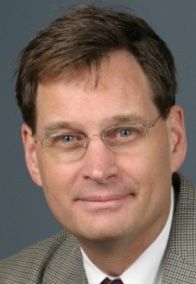Thoughts From Engineers: A First for the Great Lakes: Water Piped Out and Back In

The city of Waukesha, Wis., received permission in 2016 to divert 8.2 million gallons of Lake Michigan water per day as a new source of drinking water. Waukesha will use Milwaukee’s existing infrastructure to pump water out of Lake Michigan and 12.5 miles of additional pipeline to move the water out of the watershed. An additional 23 miles of pipeline will be built to bring treated wastewater back to Lake Michigan.
Waukesha is a thriving Midwestern city located in the middle of one of the world’s largest concentrations of groundwater. Why would a city rich in groundwater need to import drinking water? The operative word is radium, an element that occurs naturally in sandstone rock but is a confirmed carcinogen when present in groundwater at high-enough levels. Oddly enough, radium hasn’t always been a problem in the city’s drinking water.
In fact, Waukesha’s water once was a craved commodity whose value as a source of strength and well-being could lure the rich and famous from all points on the planet. Apparently, it all began when a businessman from New York visiting the young community back in 1848 claimed that drinking 12 glasses of artesian spring water within a 24-hour period cured his diabetes. Waukesha and its abundant springs became a vehicle for tourism and unchecked growth. The situation changed in the 1980s; like other famed stories of boom and bust, this tale follows a similar trajectory. Or does it?
High Water Demand and the Geology of a Confined Sandstone Aquifer
Most of the city’s original 60 springs were paved over by 1865. Waukesha was forced to drill 1,835 feet to reach the deep St. Peter Sandstone aquifer perched beneath and geologically “confined” by the Maquoketa Shale layer, which extends from the shores of Lake Michigan to a point 12 miles west of Waukesha, significantly inhibiting the aquifer’s recharge by snowmelt and rain. With Waukesha and several nearby communities pumping water from the aquifer, groundwater levels plummeted 400 to 600 feet below previous levels. Up until recently, Waukesha pulled 85 percent of its water from the deep aquifer and 15 percent from the shallow Troy Bedrock Valley aquifer that sits above.
The area’s geology affects the region’s water quality. The sandstone rock deposited thousands of years ago contains the radioactive element radium (Ra) and, to a lesser degree, the elements strontium (Sr) and arsenic (As). As radium breaks down, radioactive particles are released into the groundwater, and high levels pose a public health hazard. Radium concentrations also tend to increase at greater depths. In the 1980s, groundwater levels were already low from over-pumping, and nearly all wells used by Waukesha were contaminated.
During the course of the next decade, Waukesha studied the problem and explored several options to remediate, including radium removal treatment and drilling additional shallower wells. These alternatives weren’t considered sustainable in the long term and were likely to further deplete the aquifer. The hydrogeology of nearby wetlands and streams also would be affected. The city applied to the Great Lakes Council for a permit to divert water and is now on the cusp of undertaking a momentous project.
Moving Water through the Basin
By the terms of the Great Lakes Compact signed by the governors of eight U.S. states and Canada in 2008, new and increased diversions outside the Great Lakes basin are flatly prohibited. An exception to the rule against withdrawal can be granted if two primary conditions are met: 1) The municipality requesting withdrawal is located within a county that straddles basin boundaries; and 2) the municipality shows that existing sources of water are inadequate for its needs. Waukesha’s boundaries are entirely outside the basin, but the city is located within Waukesha County, which straddles the Great Lakes divide. Waukesha now is the first city outside the Great Lakes basin to successfully petition the council for a permit to divert water from the watershed.
In a construction phase projected to start in 2020 and conclude in 2023, Waukesha entered a 40-year service agreement with the city of Milwaukee to move water along a 12.5-mile route from the intake pipes in Milwaukee to Waukesha. The route passes through two municipalities and runs the length of approximately 775 properties. Substantial capital costs include the construction of an additional pumping station by Milwaukee Water Works, a 10-million-gallon reservoir by the city of Waukesha, and another pumping station nearer to Waukesha.
The terms of the permit also require that the 6.8-million gallons of water withdrawn be returned as treated wastewater to Lake Michigan via a 23-mile pipeline that empties into the Root River. Waukesha Water Utility General Manager Dan Duchniak claims that the water returned to the Root River will be cleaner than the water first piped into Waukesha, improving fisheries habitat and the quality of the water in the Great Lakes basin. The costs to pipe Lake Michigan water to Waukesha and return it via the Root River are roughly equal at $140 million and $146 million, bringing the total project cost to $286 million.
The One and Only Diversion?
To streamline the transition and dispel misinformation, Waukesha formed a nonprofit, the Great Water Alliance, and created a website that covers all aspects of the project, including the history and grounds for the permit as well as costs to district residents. The Alliance works hard to establish that Waukesha’s project will not trigger future requests from desperate communities and will not set a sticky precedent.
This may be true today, but as Waukesha’s surprising story shows, unexpected factors may undermine the most reasonable predictions. No one could have foreseen that Waukesha, with its plentiful spring water and deep aquifers, would some 100 years later be on the hunt for clean drinking water. When it comes to our water resources, nothing is certain.
About Chris Maeder
Chris Maeder, P.E., M.S., CFM, is engineering director at CivilGEO Inc.; email: [email protected].


